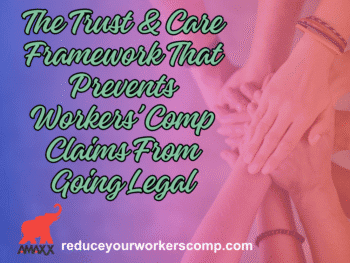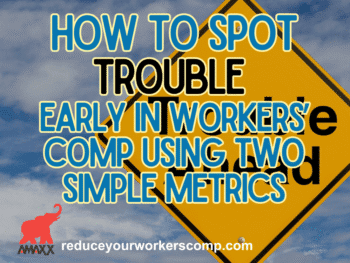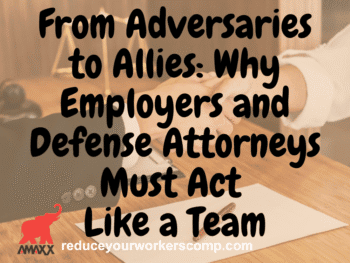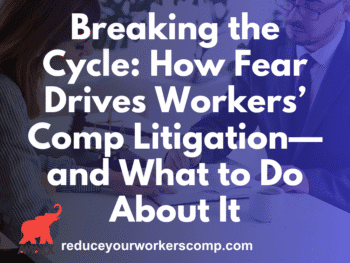How Would You Decide? Statutes of limitation for occupational disease vs. injury. When a disease can also be a workplace injury?
Here’s what Tom Robinson, J.D., writer for Lexis Nexis Workers Comp Law Center reports.
Here’s What Happened
Burress worked at IBP’s meatpacking plant from 1987 until 1997. His first few years of work involved significant contact with hogs and hog blood and on at least one occasion during that early time period, he cut a finger while working with the hogs.
During his last eight years of work he worked in IBP’s trolley room, where he did not have much contact with hogs, but occasionally did come into contact with hog blood. During this latter period, Burress indicated he cut his finger and elbow and sustained a superficial puncture wound to his face. Six years after leaving IBP, Burress was diagnosed with brucellosis with osteomyelitis. He alerted IBP of a potential workers’ compensation claim by letter. On January 3, 2005, Burress filed a claim alleging injury through contact with blood products and tissue from slaughtered hogs.
Click Link to Access Free PDF Download
“Avoid the 3 Primary Reasons Injured Workers’ Hire Attorneys”
IBP contended the injury was, if anything, an occupational disease and that Burress’ recovery was barred by Iowa Code § 85A.12, which generally required a claim to be filed no later than one year after Burress’ last exposure. The deputy commissioner disagreed with IBP, finding that Burress contracted brucellosis as a result of trauma, that Burress did not become aware of his condition until early December 2004, and that his petition for benefits was filed within two years, as prescribed by chapter 85.
The commissioner affirmed and IBP petitioned for review with the district court. That court reversed the agency’s decision, finding that Burress suffered from an occupational disease, not an injury, and that Burress had failed to file his petition within one year after the last exposure. After an intermediate appeal to the state court of appeals, the case reached the state supreme court.
Here’s What the Court Decided
In IBP, Inc. v. Burress, 2010 Iowa Sup. LEXIS 18 (Mar. 5, 2010), the Supreme Court of Iowa held there was sufficient evidence to support the commissioner’s finding that Burress had sustained an injury and not an occupational disease. Accordingly, his claim was not barred by the one-year statute of limitations related to occupational diseases. Acknowledging that brucellosis was included within the list of compensable occupational diseases, the high court stated that the disease could, nevertheless, be an “injury” under appropriate circumstances, such as when the germs gained entrance through a scratch or through unexpected or abnormal exposure to infection [quoting Larson’s Workers’ Compensation Law].
The court also observed that in Perkins v. HEA of Iowa, Inc., 651 N.W.2d 40, 43 (Iowa 2002), it had determined that an employee’s hepatitis C was an injury because her “infection was linked to a sudden, specific incident of exposure.” [Id. at 43]. That Burress could not point to a specific incident did not bar recovery, indicated the court, since the likelihood was that his condition had been contracted through contact with the hog blood at a time when Burress had some open wound. The court also held, however, that there was an issue as to whether Burress had provided notice to IBP of his claim within 90 days of discovery. The case was remanded for such a determination.
See generally Larson’s Workers’ Compensation Law, §§ 51.01, 51.02, 51.03.
Tom Robinson, J.D. is the primary upkeep writer for Larson’s Workers’ Compensation Law (LexisNexis) and Larson’s Workers’ Compensation, Desk Edition (LexisNexis). He is a contributing writer for California Compensation Cases (LexisNexis) and Benefits Review Board – Longshore Reporter(LexisNexis), and is a contributing author to New York Workers’ Compensation Handbook(LexisNexis). Robinson is an authority in the area of workers’ compensation and we are happy to have him as a Guest Contributor to Workers’ Comp Kit Blog. Tom can be reached at: compwriter@gmail.com. http://law.lexisnexis.com/practiceareas/Workers-Compensation
Do not use this information without independent verification. All state laws vary. You should consult with your insurance broker or agent about workers’ comp issues.
©2010 Amaxx Risk Solutions, Inc. All rights reserved under International Copyright Law. If you would like permission to reprint this material, contact Info@ ReduceYourWorkersComp.com.















